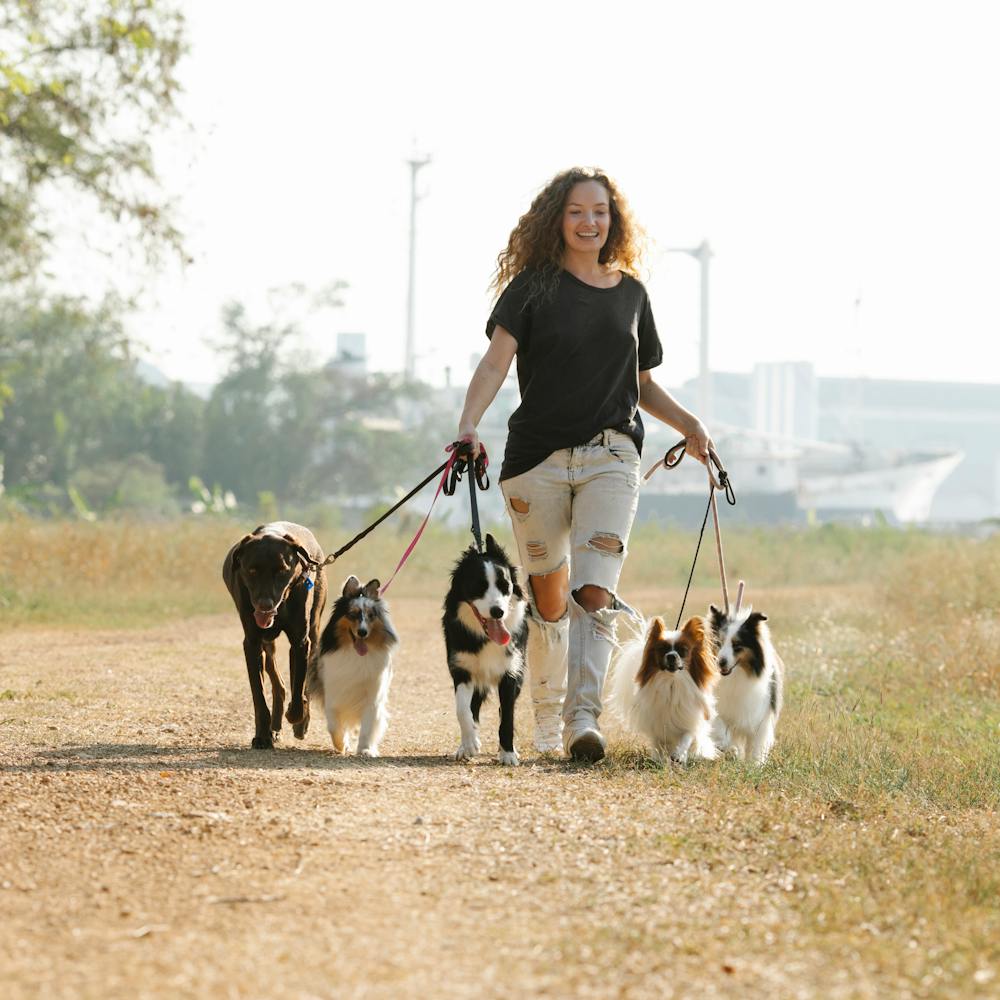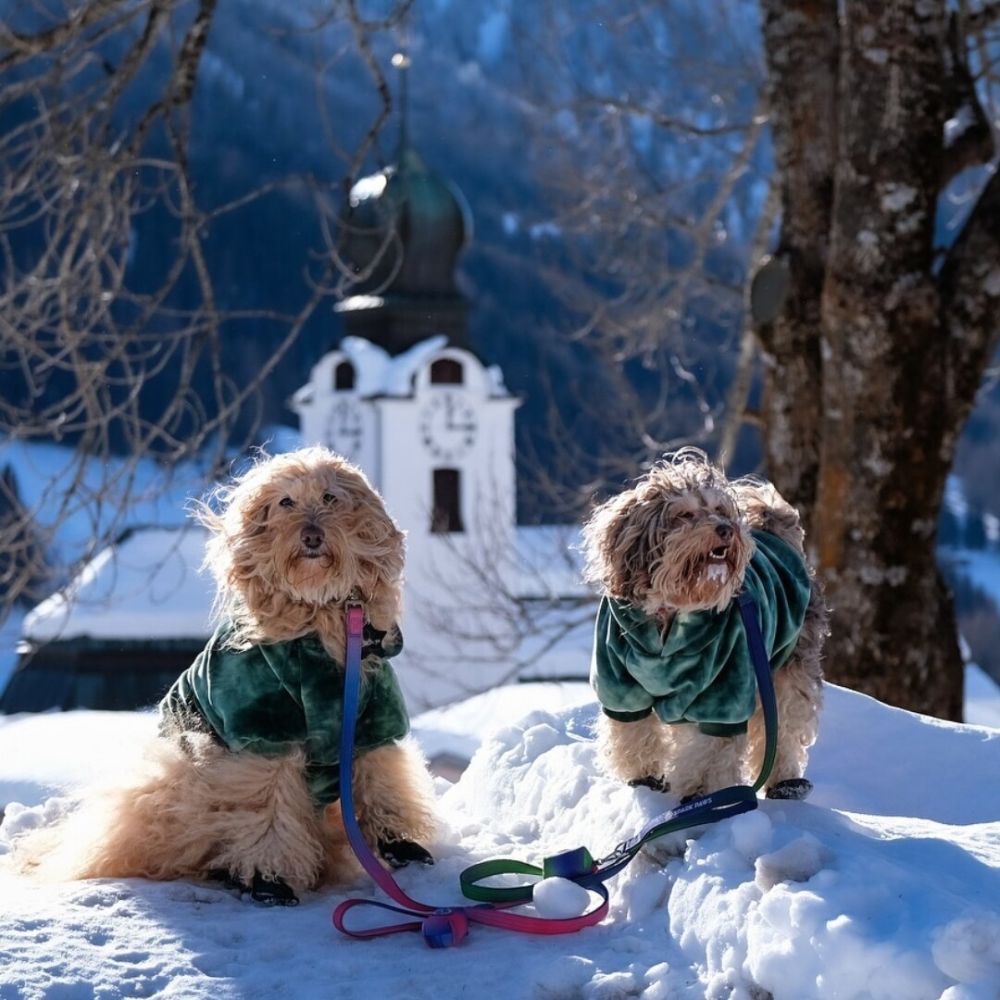How Far Should I Walk My Dog?
Walking the dog is one of the most basic parts of dog ownership. An important ritual and routine that has gone on for so long that there are many English phrases just based around it.
But nobody ever really tells you how long you should be doing it for. Or how far you should be going? This can be a source of confusion for both new and long-time dog owners. The answer may not be as completely straightforward as you think, but there are some things to consider…
Breed
The breed is going to be one of your biggest concerns when walking, as different adult dogs of different breeds have very different needs. Assuming most people are walking on relatively mild terrain, we will go by time length rather than purely distance for most dogs.
Short to minimal walkers
All healthy adult dogs need physical exercise, but some are just very poor walkers.
When you walk your dog, be careful when walking a brachycephalic breed such as a bulldog or pug. Long walks can easily tire them as they already struggle to breathe, and this can negatively impact the dog’s health. These dogs should always be walked with a harness instead of a collar.[1]
Small breed dogs such as chihuahuas, Yorkies, or Pomeranians may also struggle with their tiny legs and tire out quickly over long distances. The same goes for dogs with long backs such as dachshunds.
Most of these breeds only need a brief 30-minute walk on top of their playtime.
Medium Walkers
Most other dogs will fall into the medium walk category. All of your medium-sized breeds and more chilled large dog breeds will normally fall into the category. This can include labradors, terriers, poodles, pit bulls, etc.
The recommended amount is normally between 1 - 2 hours on top of playtime. However, this can be split into a few walks instead of one long walk. For example, if you only have access to walking around the block, and this takes you 45 min, you can choose to walk your dog around twice a day instead of one super long walk.

Far Walkers
Some large breed dogs, and some very active medium breeds, may require A LOT of exercise. This normally includes a lot of working breeds such as heelers, collies, and huskies.
High-energy dogs will easily outwalk you and often require more than 2+ hours a day of exercise. A good strategy is taking them on frequent walks throughout the day, or resorting to more unusual means, such as taking them to an agility course or dog park, or by teaching them to run safely alongside a bicycle or bike.
Oftentimes the mental stimulation of the activity is more important than just the dog’s exercise, therefore bringing along treats and toys as well as using the time for in-walk training sessions may help make your dog’s walk more tiring and satisfying for them.
Other Concerns
Some breeds may need a lot of exercise, but struggle doing long dog walks and strenuous exercise in certain climates.
Short-haired breeds, such as pit bulls, are easy to attend to as they can normally be supplied with boots and coats to be able to handle far walks in cold temperatures. But they should still be monitored and warmed up between walks.
Avoid walking long-haired breeds, such as the Bernese mountain dog or Husky, when the weather is very hot, especially if the local terrain is very hilly or difficult. They can tire out easily or even be at risk for exhaustion and heat-related illnesses.
Age-Related Differences
Adult Dogs
Putting your dog’s breed aside, your dog’s age is another important thing to consider. However, the average recommended amount for a healthy adult dog is around 30 min to an hour every day.
This may also differ slightly depending on your living arrangements. A dog that is cooped up in an apartment alone may need more ‘outdoor walk’ time compared to a dog that has a large yard and other dogs to play with.
In time, you will be able to make a judgment on how long your regular walks need to be by paying attention to things such as your dog’s weight fluctuation and behavioral changes. A lot of bad behavior, such as chewing or digging holes, is often a result of frustration and boredom. In this case, longer walks may be needed.
Senior Dogs
Older dogs need walks too, and may be at a higher risk for obesity and weight gain, which can make age-related health concerns, such as arthritis, worse.
If your senior dog is still in relatively good health, then you should be able to walk your normal walk…just a little bit slower than you normally would.
Older dogs should still be getting around 30+ min of exercise each day. Remember, this is just as much about their stimulation and mental health then it is purely for weight management. However, avoid high-impact exercises, such as running or jumping, and choose shorter routes with more time for breaks.
Supplementing their walks with some swimming will also put less pressure on old, arthritic joints.
Older dogs tend to have a harder time regulating their body temperature and may drag their paws along the ground, cutting open their paw pads. If you see your older dog is struggling, then it may be time to invest in a good, lightweight coat and some walking shoes.
Younger Dogs and Puppies
Puppies do not need a lot of exercise at all. Tiny pups shouldn’t really leave the house unless they've had all of their basic vaccines, especially if the weather is wet and cold.
Slightly older puppies can maybe be taken for walks around the garden at home. They will still get most of their exercise from playing, but it may be a good opportunity to get them comfortable around leashes and collars or harnesses.
A good rule of thumb is adding 5 minutes to each month of their age. For example, a 6-month-old puppy may be able to handle 30 minutes of walking once or twice a day. Be prepared to have to stop for breaks often.[3]
Sticking to simple low-impact and non-strenuous walks is healthier for their growth. They'll get a lot of exercise through play and training anyway.
Hold off on long, tiring walks until they’re fully grown. This may be anywhere from around 12 to 15 months old.
Underweight and Overweight Dogs
If you have recently rescued or come into ownership of a dog that is very malnourished and underweight, or very overweight and struggling to lose, neither dog will be able to walk the recommended daily amount right off the bat.
The first thing would be correcting their diet, as it is difficult to build muscle or lose fat if they aren’t eating the correct amount to allow them to do so.
Neither groups of dogs will be able to do strenuous, long-distance walking, especially if they’ve never done it before.
Instead, opt for frequent shorter walks, allowing adequate time for rest in between sessions. You may need to push the dog a bit if they’re stubborn, but avoid pushing them too hard. Instead, focus on increasing their endurance a little bit day by day until they’re able to do the average for their breed.
Can I Walk Multiple Dogs At The Same Time?
There is nothing wrong with walking multiple dogs at the same time, but be aware of your physical limitations as well as the limitations of everyone involved.
Plan your route ahead of time so that smaller, older, or unhealthier dogs can get dropped off safely if need be, and the walk can continue.
Always make sure that all of your dogs are non-reactive and have been trained to be calm and by your side before attempting to walk multiple by yourself.

Conclusion
How far should I walk my dog is a question with a few ‘ifs’ and ‘buts’.
The first thing you need to consider is the breed of your dog. Brachycephalic and tiny breeds need shorter walks than medium and large dogs. Some working dogs also require A LOT of exercise to stave off boredom and may need to be supplements.
A healthy adult dog should get around 1 - 2 hours of walking per day. Senior dogs should still be getting exercise but may need slower and easier walks. Be cautious and follow your vet’s advice if walking a sick or injured dog.
Puppies don’t need much exercise to be happy, needing around 5 minutes per month of age.
A large part of a good walk is making sure that your dog is comfortable, and this can include making sure you have the best equipment. Consider checking out Sparkpaws’ No-pull Harness collection for equipment that is both attractive and practical.
We also offer a collection of Shoes and Boots for dogs that need them.
Happy Walking!
Ext Links



